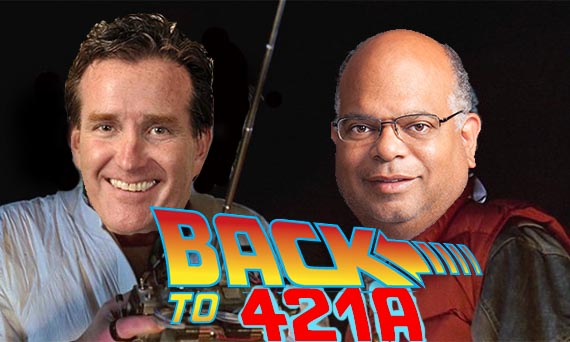Trending
Last-minute fix? Meet 421aa, the new proposed tax break
Building trades leader Gary LaBarbera calls quick fix to 421a introduced late Monday “offensive”

After several months of failed negotiations, the two groups at the center of the 421a dispute parted ways and temporarily “agreed to disagree.” The stalemate over the particularly prickly issue of construction wages continued to be insurmountable and, according to some, the groups decided to revisit the issue at a later date.
But then, just before midnight on Monday, a replacement bill quietly surfaced, one that cut out the need for the Real Estate Board of New York and the Building and Construction Trades Council of New York to reach a consensus on the prevailing wage requirement. To REBNY officials, the bill in many respects reflects the months-worth of discussions held with union reps. To Gary LaBarbera, president of the BCTC, the proposal was a dirty move that went against the agreement reached weeks ago to regroup and address the tax abatement in the near future. He called the bill “offensive” and “in bad form.”
“The bill is absolutely ridiculous. I don’t really think it’s going to go anywhere at all,” he said in an interview with The Real Deal. “This is the Senate Republicans trying to appease REBNY.”
The bill comes just days before the New York legislative session ends this week. Gov. Andrew Cuomo has said that he expected a replacement program to take shape before June 16, but has also made clear that he unequivocally wouldn’t support a program that didn’t include a prevailing wage component. With roughly 48 hours to make it to the governor’s desk, the chances of the new bill without sponsorship becoming law seems relatively meager, though REBNY officials remain cautiously optimistic. John Banks III, president of REBNY, said he supports the new version of the tax abatement, dubbed 421aa.
“Creating more below-market rental housing is one of the greatest challenges facing New York City. Any meaningful effort to address the city’s affordable housing needs will require reviving the 421a program,” Banks said in a statement. “The new program will produce even more affordable housing.”
The bill submitted by the State Senate’s Rules Committee, chaired by Long Island Republican and current majority leader Sen. John Flanagan, mostly mirrors the legislation that was enacted last summer, but which was suspended until labor unions and the real estate lobby could agree on prevailing wage provisions for construction workers at 421a projects.
The Senate measure calls for an aggregate average minimum wage of $55 per hour for construction workers — more than $100,000 a year for most workers — but only at projects south of 96th Street in Manhattan with more than 300 apartment units. In other words, only a slice of total construction activity in New York City in a given year. At most construction sites the effective minimum wage would stand at $15 dollars until 2017, when it would become $16.50, eventually reaching $21 in the year 2020. Building service workers will still be paid prevailing wages set by the city comptroller based on union contracts, as under existing law. The minimum wage component didn’t please LaBarbera.
“Thank you for giving the workers the minimum wage,” he said. “Are they really that out of touch?”
Other differences include a bump in the maximum allowed assessment value of condominiums that can be built with tax exemption, which the Senate bill raises from $65,000 to $75,000. Furthermore, the 421aa measure would only require that half of a new development’s condo units meet that assessment cap, as opposed to all of the units, as was previously enacted. This keeps open for developers the possibility to build luxury condos with the tax benefits, easily the most controversial aspect of 421a historically. However, as with the bill passed last summer, new condo buildings cannot be located in Manhattan and cannot contain more than 35 units.
LaBarbera, who TRD profiled on Tuesday, has hinted in the past that the governor may impose his own replacement program, but a representative for the Cuomo administration said on Tuesday that the governor isn’t currently working on a replacement program. The representative said that the governor’s office worked tirelessly with both REBNY and unions to reach an agreement, but that the appetite for reaching a solution wasn’t strong enough.
Legal experts who spoke to TRD said that developers expect some sort of replacement for 421a to eventually emerge, but the central question is a matter of when. Daniel Bernstein, an attorney at Venable LLP, said that at the very least, the new bill will spark more conversation about construction wages.
“Everything seems to happen at the end of legislative sessions and there’s still some time yet,” he said. “Uncertainty has been a paralyzing force in residential development this year. It’s in everyone’s interest to try to resolve that. Let’s see what happens.”




